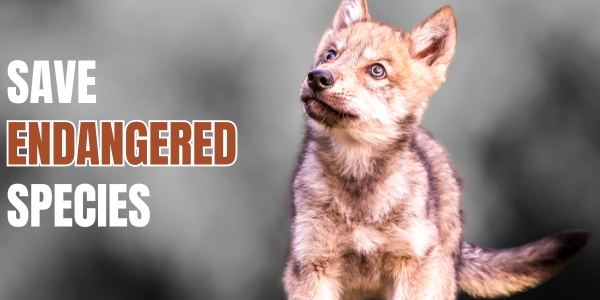Photo credit: Jim Rorabaugh, USFWS
Chiricahua leopard frog (Lithobates chiricahuensis) | ESA status: threatened
Chiricahua leopard frog
The Chiricahua leopard frog is lucky enough to be one of few frogs listed under the Endangered Species Act, but it still faces numerous threats to its streamside homes.
Chiricahua leopard frog facts
The Chiricahua leopard frog is typically green with namesake dark, leopard-like patterning and golden eyes. They are stocky animals that can grow up to 4.3 inches long, and are most active at night.
For successful reproduction, these frogs need permanent water 15 to 35 cm deep. They lay their eggs in masses near the shore on vegetation growing close to the water’s surface. After metamorphosis, the frogs eat an array of invertebrates and small vertebrates.
Male Chiricahua leopard frogs’ mating calls resemble the sound of a snoring human. Hear the call of the Chiricahua leopard frog here.
Chiricahua leopard frog habitat
Chiricahua leopard frogs historically lived in cienegas, lakes, ponds, and riparian zones at elevations between 3,281 and 8,890 feet in central and southeastern Arizona, west-central and southwestern New Mexico, and the sky islands and Sierra Madre Occidental of northeastern Sonora and western Chihuahua, Mexico. The species has now vanished from more than 80 percent of its former habitat in Arizona. Although less is known about the New Mexico population, the frog appears to have disappeared from more than 80 percent of its habitat in that state as well.
What are the threats to the Chiricahua leopard frog?
Most of the southwestern streams the Chiricahua leopard frog calls home have shrunken or disappeared. Groundwater pumping, damming, and water diversion have dried up streams and interrupted pool creation. Cattle destroy vegetation, trample banks, and pollute water with silt and droppings. Some leopard frogs, particularly males, will travel long distances (more than two miles) along connected riparian habitat in search of food or mates, highlighting the importance of habitat corridors for this species. Now, however, their routes are dry or are home to dangerous introduced predators and competitors such as bullfrogs, game fish, and crayfish, leaving the frogs stranded in isolated pockets. Weakened by stresses like pollution, pesticides, and increased UV radiation, the species is also being devastated by chytrid fungus, which is killing frogs worldwide and is linked to global warming.
The U.S. Fish and Wildlife Service listed the Chiricahua leopard frog as a “threatened” species in 2002. Listing prompted numerous efforts to protect and restore habitat for the frog and control exotic species on both public and private land. Although the species has continued to decline in New Mexico, populations and occupied sites have increased in Arizona since 2002. Designation of critical habitat, as required under the Endangered Species Act, will help ensure long-term recovery of the Chiricahua leopard frog.
Historical Significant Actions
U.S. Fish and Wildlife Service designates critical habitat for the Chiricahua leopard frog March 2012
U.S. Fish and Wildlife Service proposes critical habitat protections for the Chiricahua leopard frog March 2011
“Western Wildlife Under Hoof” (report) April 2009
“The Greater Gila Bioregion: America’s First Wilderness” (report) March 2009
Wildlife Press: Chiricahua Leopard Frog
WildEarth Guardians to showcase 100,000 actions to honor 100 years of Gila Wilderness at Silver City celebration
Protecting the wildlife, habitat, water, and cultural resources of the Gila Wilderness and surrounding wild, yet unprotected, landscape of the Greater Gila region
Read more >